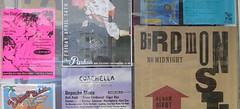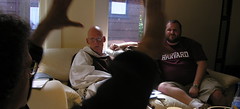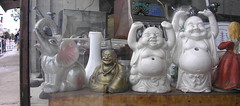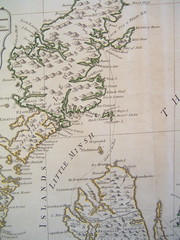Bad Taste as a Measure of Political Corruption
 In Britain's nineteenth-century debates over bureaucratic expansion, expert authority, and wasteful expenditure, architectural design offered a new rubric for evidence of how far the public trust had been abused: the measure of “taste.”
In Britain's nineteenth-century debates over bureaucratic expansion, expert authority, and wasteful expenditure, architectural design offered a new rubric for evidence of how far the public trust had been abused: the measure of “taste.” In 1808, Mr. Windham paired his objection to wasteful expenditure on a new Exchequer building with condemnation of the “bad taste which prevailed in the pretended improvements.” Mr. Fuller, cautioning that any expenditure should not be a waste, critiqued the recent rebuilding of the House of Lords, joking that “its pilasters appeared nothing better than a set of elongations.”
The measure here was not personal taste, of course; rather, it represented Hume-inspired, objective taste in beauty; “taste” as a scientific measure of the degree to which architects and committees had conspired towards a fit, public end, immediately recognizable by the uneducated masses as well as the designing elite.
A critic of parliamentary building projects explained:
The effect which a fine specimen of art, more especially in architecture, creates on the mind, is not alone confined to the critic or the man of taste; it does not result from knowledge or reflection, it arises not from an acquaintance with the rule and compass; but it is the result which beauty and excellence, shewn in harmony of proprotions, grandeur of dimensions, and due arrangement of ornament, will never fail to produce.
The spectator, when he feels thus, pauses not to inquire whether the canons of Vitruvius, or any more modern teacher of the art, have been strictly observed; nor does his admiration decrease one tittle when he is informed by some critic at hand that every law of architecture has been violated in the structure.
Now that the government started building architecture for the people, tasteful buildings would be the immediately accessible signs for the people of what sort of a government they had. Good buildings would tell the people that they had a good government. Poor buildings would evidence a corrupted state that employed wortheless architects on the basis of nepotism and privilege.
“Bad taste” was, moreover, flexible as a marker: Not only did it signify the abuse of public taste by malicious experts; it could also signify the zone where economy and bureaucratic interference had gone too far and interfered with expert wisdom. The 1828 committee that inquired into so much waste in public spending found that the “inconvenient line” and poor taste in which the Council Office was produced were the result of cost-cutting around Soane’s original designs. Here, cost-cutters were to blame rather than designers. When the committee asked about a stray balustrade placed upon the roof of a “dwarfish front,” Soane replied that it was the fault of financially-fiscal, tampering officialdom, medaling with his designs: “he had nothing to do either with the putting it on or taking it off.”
Where “taste” appeared in the public landscape, it demonstrated that the bureaucracy had recruited a real architect, negotiated certain limits, and given room to the architect’s imagination. “Bad taste” as a measure of abusive management promised a rule for showing that the balance of power between the expert and the bureaucracy was out of whack.










0 Comments:
Post a Comment
<< Home